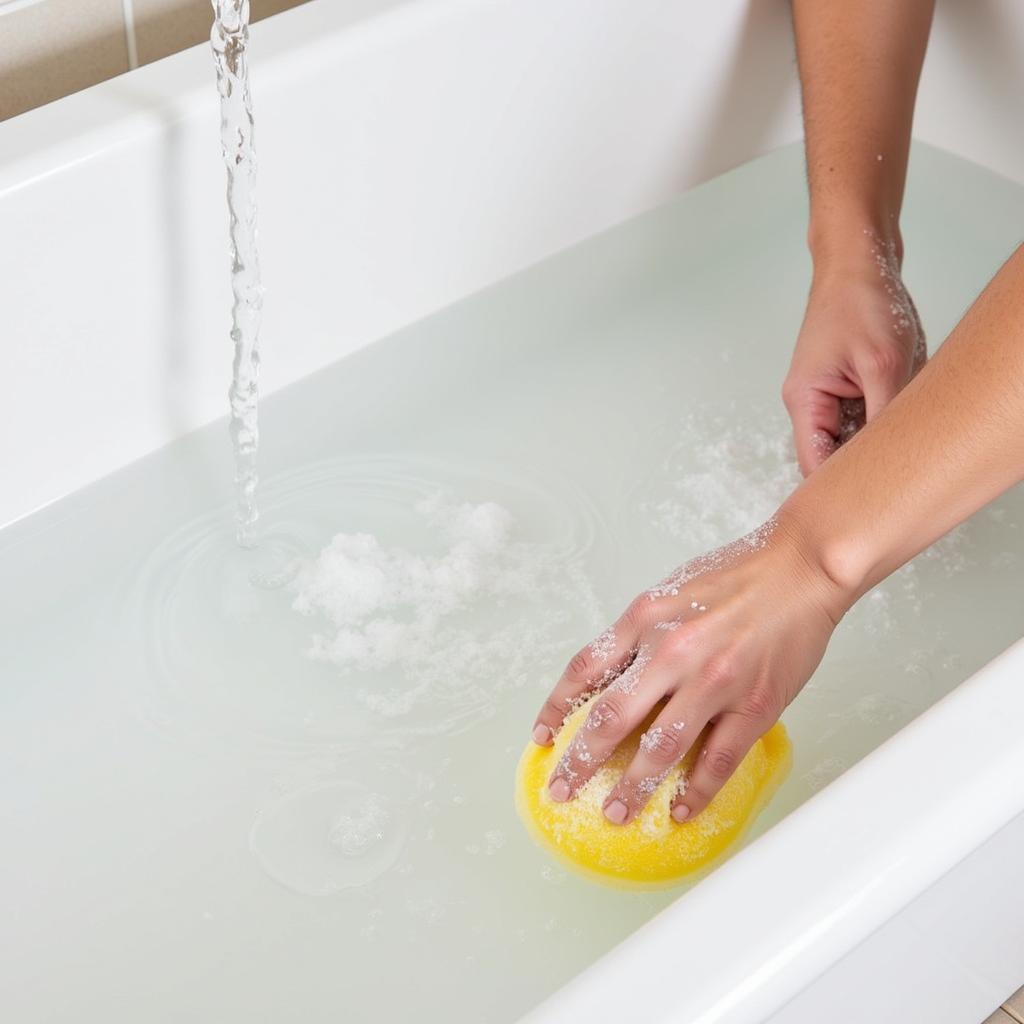Food Grade Tubs are essential for anyone who values safe and efficient food storage, whether you’re a home cook, a restaurant owner, or a food manufacturer. These versatile containers play a crucial role in preserving food quality, extending shelf life, and maintaining hygiene standards. From storing bulk ingredients to transporting prepared meals, understanding the nuances of food grade tubs can make all the difference. Let’s dive into everything you need to know about these indispensable kitchen companions.
What Makes a Tub “Food Grade”?
Not all plastic tubs are created equal. “Food grade” signifies that the container meets specific regulations and standards set by organizations like the FDA (Food and Drug Administration) in the United States or the EFSA (European Food Safety Authority) in Europe. These standards ensure that the plastic used in the manufacturing process doesn’t leach harmful chemicals into the food it contains, even under varying temperatures and storage conditions. Look for containers explicitly labeled as “food safe,” “FDA approved,” or displaying similar certifications. Choosing the right food grade tub is essential, and sometimes custom plastic food packaging can be the perfect solution.
Choosing food-safe containers for your commercial kitchen is paramount, and high-quality commercial kitchen food storage containers can streamline your operations while keeping food fresh and safe.
Knowing what to look for in a food grade tub is vital, so let’s unpack the essential qualities. Food grade tubs are typically made from HDPE (high-density polyethylene), LDPE (low-density polyethylene), or PP (polypropylene), which are all known for their durability, resistance to chemicals, and ability to withstand temperature fluctuations. They should be BPA-free, meaning they don’t contain Bisphenol A, a chemical compound that can have adverse health effects.
 Various Food Grade Tubs
Various Food Grade Tubs
Sizing Up Your Storage Needs: Choosing the Right Food Grade Tub
Food grade tubs come in a vast array of sizes, from small deli containers perfect for individual servings to large bulk storage bins ideal for restaurants or food processing facilities. Consider what you’ll be storing and how much space you have available. For instance, if you’re prepping ingredients for a busy week, smaller, stackable tubs might be your best bet. For bulk dry goods, larger containers with airtight lids are the way to go.
Beyond the Basics: Exploring the Benefits of Food Grade Tubs
Food grade tubs offer numerous advantages beyond just keeping food safe. Their airtight seals help maintain freshness and prevent freezer burn. They’re also reusable and often recyclable, contributing to a more sustainable kitchen. Many are dishwasher-safe, making cleanup a breeze. Moreover, their durability makes them ideal for transporting food, whether you’re catering an event or packing a picnic.
If you’re looking for alternatives to traditional sugary treats for school celebrations, our guide on non food birthday treats for school might spark some inspiration.
 Food Grade Tubs in a Restaurant Kitchen
Food Grade Tubs in a Restaurant Kitchen
Caring for Your Food Grade Tubs: Tips for Longevity
Proper care ensures your food grade tubs last for years. Always wash them thoroughly with hot, soapy water after each use. Avoid using abrasive cleaners or scouring pads, which can scratch the surface and potentially harbor bacteria. For stubborn stains, try soaking the tub in a solution of baking soda and water. Store your tubs in a cool, dry place away from direct sunlight.
For restaurants and other food businesses, having the right plastic food containers restaurant supplies is crucial for efficient storage and service.
 Cleaning Food Grade Tubs
Cleaning Food Grade Tubs
FAQs About Food Grade Tubs
Q: Are all food grade tubs microwave-safe?
A: Not all food grade tubs are microwave-safe. Check the manufacturer’s instructions before microwaving.
Q: Can I freeze food in a food grade tub?
A: Yes, most food grade tubs are freezer-safe, but ensure they are specifically labeled as such.
Q: How do I know if a tub is truly food grade?
A: Look for labels like “food safe,” “FDA approved,” or symbols indicating compliance with food safety regulations.
Q: Can I use food grade tubs for storing non-food items?
A: While possible, it’s best to reserve food grade tubs for food storage to avoid cross-contamination.
Q: How long do food grade tubs last?
A: With proper care, food grade tubs can last for several years.
Q: Are food grade tubs recyclable?
A: Many food grade tubs are recyclable; check your local recycling guidelines.
Q: What are the different types of plastic used in food grade tubs?
A: Common plastics include HDPE, LDPE, and PP, each with different properties.
Conclusion
Food grade tubs are an investment in food safety, efficient storage, and overall kitchen organization. By understanding the different types, sizes, and care instructions, you can choose the perfect tubs to meet your specific needs and keep your food fresh and safe for longer. Remember to look for certifications and labels to ensure your tubs are truly food grade, guaranteeing the safety and quality of your stored food.
For any assistance, feel free to contact us at Phone Number: 02437655121, Email: minacones@gmail.com Or visit us at: 3PGH+8R9, ĐT70A, thôn Trung, Bắc Từ Liêm, Hà Nội, Việt Nam. We have a 24/7 customer support team.